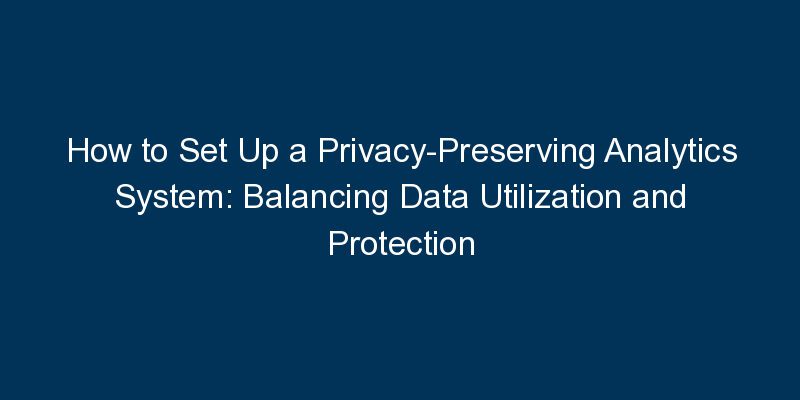Setting up a privacy-preserving analytics system is crucial in the era of data-driven insights while respecting individual privacy rights. This blog provides a comprehensive guide on how to set up a privacy-preserving analytics system, striking a balance between deriving valuable insights and protecting sensitive information.
Introduction:
The demand for data-driven insights must be met with a commitment to safeguarding individual privacy. A privacy-preserving analytics system achieves this delicate balance, allowing organizations to glean valuable insights without compromising the privacy of individuals. This guide explores the key steps in establishing such a system.
Key Steps to Set Up a Privacy-Preserving Analytics System:
- Define Privacy Preservation Goals: Clearly define the goals of your privacy preservation strategy. Understand the types of data that require protection and the level of privacy compliance necessary for your industry.
- Implement Anonymization Techniques: Utilize anonymization techniques to protect individual identities. This may involve techniques like data masking, tokenization, and generalization to de-identify personally identifiable information (PII).
- Differential Privacy Measures: Implement differential privacy measures to add noise or randomness to data, making it challenging to identify individual contributions to datasets. This ensures that even with access to analytics results, individual privacy is maintained.
- Privacy Impact Assessments: Conduct privacy impact assessments to evaluate the potential privacy risks associated with analytics initiatives. This includes assessing the data lifecycle, from collection to storage and analysis.
- Secure Data Transmission: Implement secure protocols for transmitting data between systems. Use encryption and secure channels to protect data in transit, ensuring that sensitive information remains confidential during analytics processes.
- Data Governance Policies: Develop and enforce robust data governance policies. Clearly communicate how data will be handled, who has access, and the measures in place to preserve privacy. Regularly audit and update policies to align with evolving privacy regulations.
Conclusion:
Setting up a privacy-preserving analytics system is a strategic imperative for organizations that handle sensitive data. By following the steps outlined in this guide, businesses can harness the power of analytics while upholding individual privacy rights and complying with data protection regulations.






















Comments